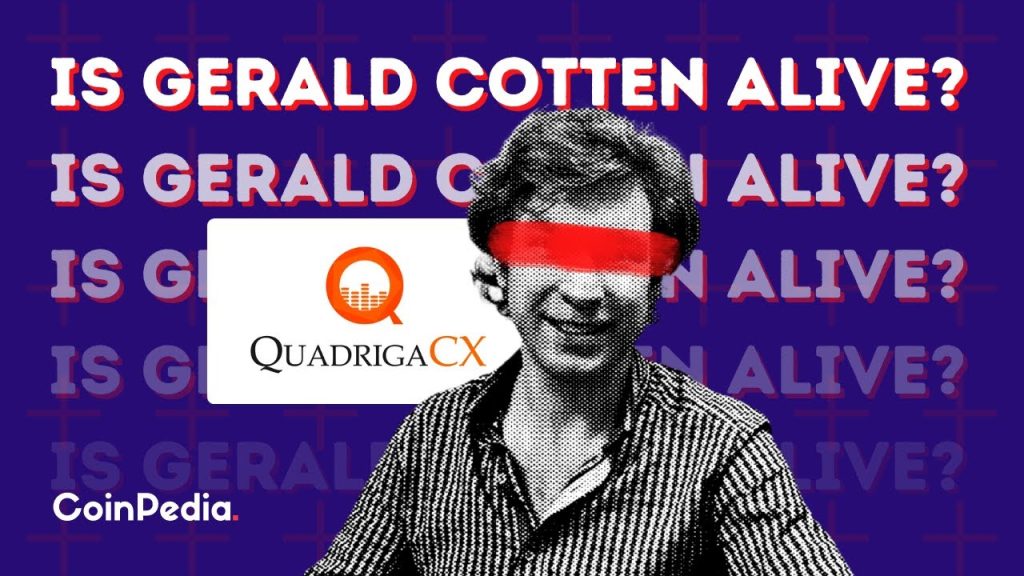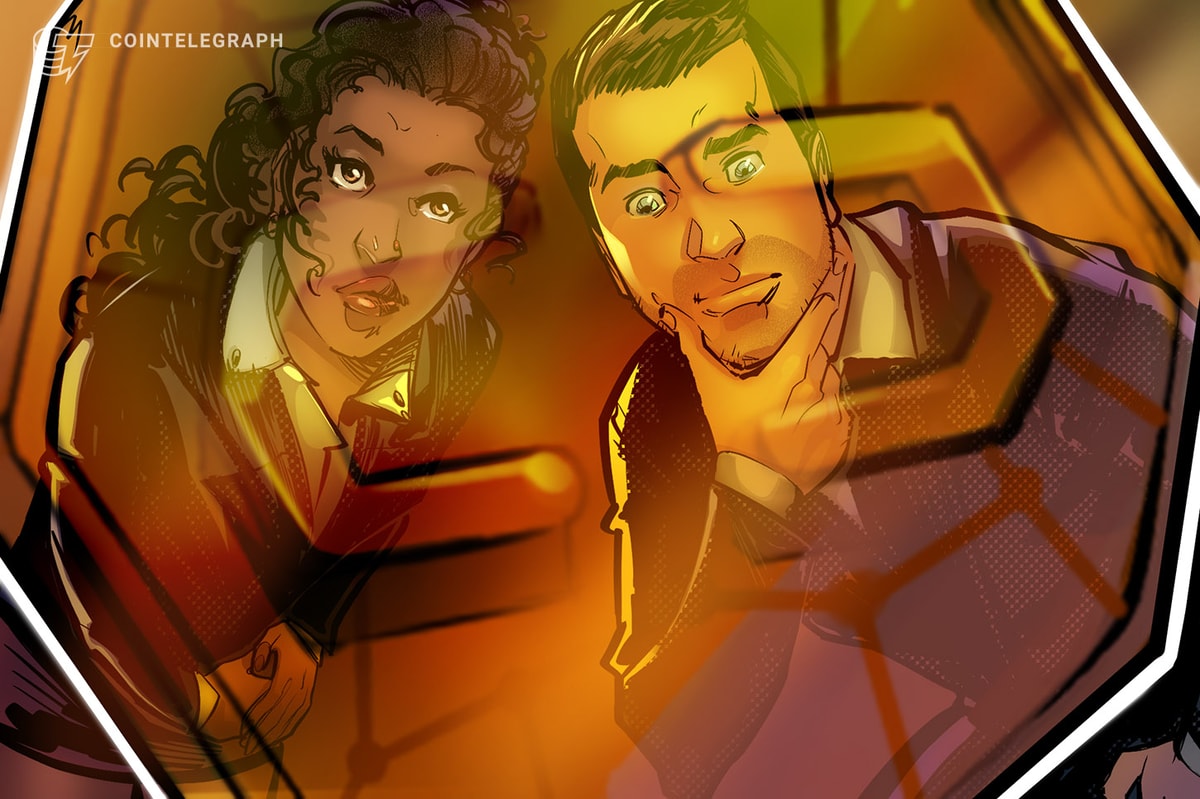
The post QuadrigaCX Collapse: The Devastating Fallout and its Victims appeared first on Coinpedia Fintech News
This is the story of QuadrigaCX, a story that will keep you on the edge of your seat.
It’s a story of greed, deception, and the ultimate question of where millions of dollars in assets have gone.
It’s a story of changing identities, a marriage, a last-minute will, and the strange death of a person solely responsible for $190 million in assets.
And how did one of Canada’s most reliable cryptocurrency exchanges turn out to be the biggest scam of 2019, leaving its customers without access to their funds
In this article, we will take you through the background of QuadrigaCX, the events leading up to the scandal, the investigation, and the aftermath.
Let’s start by looking at the background of QuadrigaCX.
Rise of QuadrigaCX
In the year 2013, Gerald Cotten a native Canadian founded QuadrigaCX, with his co-founder Michael Patryn.
Cotten had a background in computer science and had previously founded several small tech startups. Michael Patryn, on the other hand, was known for his involvement in the online gaming community and had experience working in the payment processing industry.
However, the company began as a cryptocurrency exchange, allowing users to buy, sell and trade various digital assets, including Bitcoin, Ethereum, and many more. In 2014, QuadrigaCX started doing a $7.4m volume in daily trading.
Over time, QuadrigaCX became one of the most popular and widely used cryptocurrency exchanges in Canada. However, by the end of 2017, they were doing a 1.2 billion volume in daily trading.
Eventually, it was considered a trusted platform by many in the community. As they had the vision to revolutionize the local bitcoin trade. With a small team and limited resources, they managed to open a Bitcoin ATM in Vancouver but soon hit a rough patch.
At the peak of its success, QuadrigaCX was considered one of the leading cryptocurrency exchanges in the market, serving over 115,000 customers. The company was valued at over $100 million and had processed over $300 million in trades.
But in 2018, when bitcoin started to plummet, investors started panicking & tried to pull out the money from the exchange. Suddenly, customers began to complain about the lengthy withdrawal time, and those with the large balance were required to wait for several weeks for withdrawal.
The Mystery of Gerald Cotten’s Death
In the meantime, QuadrigaCX CEO Gerald Cotten and his girlfriend Jennifer Robertson went to Jaipur, India for their honeymoon, with their dream intention of sponsoring an orphanage.
Just nine days into their honeymoon, Gerald fell ill. He was suffering from an autoimmune disease called Crohn’s disease. On December 8, 2018, he was admitted to a private hospital in Jaipur where he was diagnosed with acute gastroenteritis.
The next afternoon, his condition worsened, and before doctors could stabilize him, his heart stopped functioning and Gerald was declared dead. Jennifer returned to Canada with Gerald’s body. Jennifer informed Quadriga’s investors about Gerald’s demise through Gerald’s Facebook account.
On 9 Dec 2018, the company announced that its founder, Gerald Cotten, had died suddenly while on a trip to Jaipur, India.
According to his death certificate, Cotten died due to complications related to Crohn’s disease, a chronic inflammatory bowel disease
How Gerald’s Death Steals Customer’s Funds Forever?
Lately, the company announced that, with the death of Gerald Cotten, the access codes to the cold wallets holding the customer funds had died too.
The news sent shockwaves through the cryptocurrency community as the total value of the missing funds was estimated to be around CAD 145 million. The company suddenly became unable to access its funds, leaving its customers without access to their own money.
However, Quadriga was using a few third-party payment processors, for managing international wire transfers and fiat currency deposits and withdrawals.
Crypto Capital was one of them, a company which set up to act as a shadow bank. Another payment processor used by Quadriga was Custodian Inc., which had bank accounts with CIBC totaling $28M.
Because, the company was unable to access the cold storage wallets, and there were no records of their private keys. This left customers without access to their funds and led to a storm of complaints and lawsuits.
Some reports have also suggested that Cotten may have shared some of the responsibilities of running the company with his girlfriend, who was reportedly the only other person with access to his laptop.
In an interview, with Cotten’s widow, she stated that the laptop he was using was similarly encrypted. And she looked for the Quadriga account passwords her husband had written down, but Jennifer Robertson claimed she was unsuccessful.
However, the exact extent of her involvement and knowledge of the situation is unclear.
Beginning of Investigation into Crypto Exchange Scandal”
But in the wake of the scandal, authorities launched an investigation into QuadrigaCX to try and determine what had happened to the missing funds.
The investigation was conducted by the Royal Canadian Mounted Police, along with Ontario Securities Commission and the investigation has revealed various surprising events.
The investigation revealed that QuadrigaCX had been operating as a Ponzi scheme and that there were several red flags and irregularities in QuadrigaCX’s operations, including fraudulent activities, mismanagement of funds, and misrepresentation of financial statements.
Later in the investigation, it was found that the total amount of missing funds was to be around $190 million, not CAD 145 million (as stated by authorities of QuadrigaCX), and it quickly became clear that the customers were not going to be able to recover their money.
Ontario Securities Commission (OSC) said Cotten’s “fraudulent” trading was responsible for around $115 million of the $169 million in clients lost.
However, the Canadian Imperial Bank of Commerce (CIBC) had frozen Custodian Inc.’s accounts at this time, which Quadriga blamed for its liquidity problems, resulting in an additional loss of $28 million.
The investigation also uncovered that the company’s CEO Gerald Cotten had transferred significant amounts of customer funds to his accounts and had been using customer funds to pay out other customers and to fund his lavish lifestyle.
However, the circumstances of Cotten’s death were suspicious.
And just two weeks before he passed away, he had changed his will, leaving his $9.6 million personal property to her wife Jennifer Robertson and to take care of his two dogs which ironically he left a hundred thousand dollars in his will.
The legal proceedings that followed were lengthy and complex.
Quadriga CX declared Bankrupt
The company was eventually declared bankrupt, and a court-appointed monitor was tasked with trying to recover the missing funds. However, despite these efforts, it’s unlikely that the majority of the funds will ever be recovered.
Only $46 million worth of assets were retrieved by Ernst & Young, Quadriga’s bankruptcy trustee, to distribute to clients.
Many customers felt that they were left in the dark and not receiving any updates on the status of their funds. Additionally, customers were frustrated with the lack of transparency and accountability from the exchange.
They wanted answers. They wanted revenge.
To date, the exact extent of Cotten’s wealth and the whereabouts of his assets remain unclear.
Cotten Faking of His Own Death?
However, some people think Gerald is still alive somewhere he’s on a beach sipping a Mai Tai, and some investors have suggested that he may have faked his own death to escape legal troubles.
There is some incident that seems to confirm this claim.
In a Vanity Fair article, his yacht dealer mentioned that he had sold his $600,000 yacht to Gerald.
The yacht dealer explains things like when they were sailing around Mahone Bay, Canada, Gerald’s eye was struck at a four-acre bay island. He bought the island, cleared the land, and built a house. The yacht dealer says that Gerald always boasted about his travels & the plane he owned.
An additional incident that strengthened this claim was Gerald’s death;
When it was found that Gerald’s name was misspelled in his death certificate as “Cottan” instead of “Cotten” and also it was learned that the chairman & managing director of the company that ran the hospital was charged with financial fraud two months before Gerald’s death.
And this suspect became even stronger when the news came out that Gerald had written his will just four days before the honeymoon. The will had no mention of any external hard drives or cold wallets that consist of Quadriga’s funds.
However, there is no conclusive evidence to support these claims.
Among all these, there was one person who was missing, Michael Patryn. As mentioned Patryn is a co-founder of Quadriga along with Cotten back in 2013. The way Gerald Cotton faked his own death to escape legal troubles…..like how Michael Patryn faked his identity
In Feb 2019, the Canadian news media, The Globe & Mail confirmed that Omar Dhanani, who pled guilty & was arrested in 2005 for being involved in an online identity theft ring is none other than Michael Patryn.
As we come to the end of the article, we would like to ask you, the readers,
What are your thoughts on QuadrigaCX,
Do you think that Gerald Cotten is still alive?
And what will happen with the customer’s fund, will they get their reimbursement?
Let us know in the comments!!!
If you want to learn more about such a fascinating event, though you must check out our Coinpedia youtube channel, here we regularly post video’s on crypto-related documentaries.
https://portswigger.net/daily-swig/heres-the-evidence-that-cryptocurrencies-are-extremely-secure-the-passwords-have-gone-to-the-grave
Read More: bitcoinwarrior.net









 Bitcoin
Bitcoin  Ethereum
Ethereum  Tether
Tether  XRP
XRP  USDC
USDC  Solana
Solana  Dogecoin
Dogecoin  TRON
TRON  Cardano
Cardano  Lido Staked Ether
Lido Staked Ether  Wrapped Bitcoin
Wrapped Bitcoin  LEO Token
LEO Token  Toncoin
Toncoin  USDS
USDS  Chainlink
Chainlink  Stellar
Stellar  Wrapped stETH
Wrapped stETH  Avalanche
Avalanche  Shiba Inu
Shiba Inu  Sui
Sui  Hedera
Hedera  Litecoin
Litecoin  MANTRA
MANTRA  Polkadot
Polkadot  Bitcoin Cash
Bitcoin Cash  Bitget Token
Bitget Token  Ethena USDe
Ethena USDe  Binance Bridged USDT (BNB Smart Chain)
Binance Bridged USDT (BNB Smart Chain)  WETH
WETH  Pi Network
Pi Network  WhiteBIT Coin
WhiteBIT Coin  Wrapped eETH
Wrapped eETH  Monero
Monero  Hyperliquid
Hyperliquid  Uniswap
Uniswap  OKB
OKB  Dai
Dai  sUSDS
sUSDS  Pepe
Pepe  Aptos
Aptos  NEAR Protocol
NEAR Protocol  Gate
Gate  Coinbase Wrapped BTC
Coinbase Wrapped BTC  Tokenize Xchange
Tokenize Xchange  Ondo
Ondo  Mantle
Mantle  Cronos
Cronos  Internet Computer
Internet Computer  Ethereum Classic
Ethereum Classic